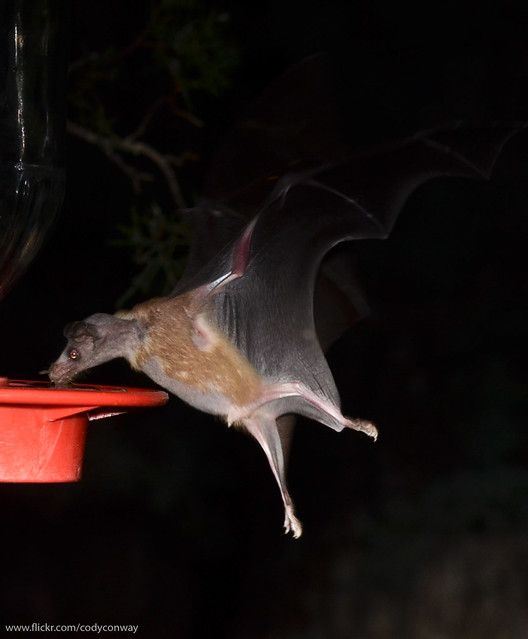» Site Navigation

1 members and 1,286 guests
Most users ever online was 47,180, 07-16-2025 at 05:30 PM.
» Today's Birthdays

» Stats

Members: 75,937
Threads: 249,130
Posts: 2,572,295
Top Poster: JLC (31,651)
|
-
Some pic and i need some help
I finally got around to setting up my light box, it is a 36 inch cube with a black velvet back drop, i have 6 lights on it (4) 18w (75 w equ)CFL bulbs(5000K) and (2) 26 w(100w equ) CFL bulbs(6500K) all placed in different directions, but my pictures still seem so dark. i have tried adjusting the aperture, iso, and shutter speeds. Either half the subject is not in focus or it becomes blurry with the long shutter speeds. I want to add more lights if everyone thinks it will help i just don't know what other lights i can use that will still capture the colors of the animals.Or should I make my light box smaller in height(made it out of pvc pipe)? My equipment is a Canon T2I with 18-55mm and 55-250 mm lens.
here are some examples






Sorry about some of the hair cat jumped in light box while i was grabbing a drink
any help is appreciated
Thanks
-Tom
Tom
Ball Pythons
Females: Poss. het albino (Angel),Albino (Corona),Pastel Lesser (Lila),Pinstripe Het Albino (Sandy), Pastel Pied (Pandora),
Males: Black Pastel Het Albino (Diablo),Piebald (Atlas),Killerbee (King)
Morelia
0.1 Jungle carpet python (Sage)
0.0.1 Green tree python (Unknown)
Misc.
0.1 Snow Corn (Roxy)
0.1 Bearded dragon (Coral-Blood X Red/Citrus)
1.0 Diamond Back Terrapin(Crush)
-
-
Registered User


Re: Some pic and i need some help
-
-
Registered User


Re: Some pic and i need some help
Mybe try getting some natural light or more bulbs. Do you have a tripod for slow shutter speed? Thatd help.
-
-
Re: Some pic and i need some help
Tom
Ball Pythons
Females: Poss. het albino (Angel),Albino (Corona),Pastel Lesser (Lila),Pinstripe Het Albino (Sandy), Pastel Pied (Pandora),
Males: Black Pastel Het Albino (Diablo),Piebald (Atlas),Killerbee (King)
Morelia
0.1 Jungle carpet python (Sage)
0.0.1 Green tree python (Unknown)
Misc.
0.1 Snow Corn (Roxy)
0.1 Bearded dragon (Coral-Blood X Red/Citrus)
1.0 Diamond Back Terrapin(Crush)
-
-
BPnet Veteran


Your shutter speed, and iso will effect The ambient light, or constant light exposure, aperture, will too when just using constant,ambient, available light. The aperture and iso will effect the flash exposure, (if your using a flash) and depth of field.
If you want more of the picture in focus you need a smaller aperture. f8,f11,f16. But using a small aperture will slow your shutter speed down. Ok so to get your shutter speed up. The only thing left to do is raise your iso. When you go up on your iso. You get more noise in your image. ISO is how sensitive your sensor is to light.
Your 18-55mm and 55-250 mm lens. Im pretty sure have a variable aperture. I think your 18 to 55 is a 3.5 to 5.6 or something like that. So that means your widest aperture you can get on that lens is 3.5. But thats only at 18mm. If you set your lens at 18mm, and aperture of 3.5 or whatever the widest is . Then you zoom to 55mm. Your aperture changes. You widest aperture at 55 is 5.6. So if your zooming in and out. Your aperture can be changing. That will effect your exposure. If you think your shooting at 3.5, but you zoom in to 55mm. Your now at 5.6. but your shutter speed is still set for a good exposure at 3.5. Same with the 55-200. Thats if your shooting in manual mode. If your in aperture priority or an auto mode. The shutter speed will change with it, to get what the camera things the proper exposure is.
Slow shutter speed you will get blur from camera moving, and your subject moving. Id say start off with at least a 1/125th for your shutter speed, to freeze motion. Faster the subject moves, the faster shutter speed you may need. If your shooting your 55-200 at 200. (a good rule of thumb) Your shutter speed should = or + your focal length. That will help cut down the camera shake,if hand holding your camera. So shooting at 200mm then your shutter speed, can be set at 1/200th or faster, to help with camera shake.
Use a smaller aperture to get more of the subject in focus. f/8, f/11, f/16. Again using a smaller aperture, you are letting less light in. So you need to compensate for that somewhere else. Shutter speed, or ISO. Aperture effects the amount of light coming into your sensor. Shutter speed effects the duration of light. (How long the light hits the sensor.)
So faster shutter to freeze your subject, smaller aperture, to get more in focus, Bump up your ISO up. Be careful with the ISO. It will add noise to the image the higher it goes. If your still not getting a proper exposure, then you may need more light..
I used constant light for a long time. Flash really freaked me out.. Now that I have started shooting with flash, I will most likely never go back to constant lights. I still shoot a lot of available light stuff. Id check into getting one of these flashes, and radio triggers, Just make sure they will work with your camera first. That way you can get the flash off camera. These are not top of the line, triggers, or flashes. But they are great for what they cost. A great low cost way to get into off camera flash..
http://www.amazon.com/Yongnuo-YN-560...2995965&sr=8-1
http://www.amazon.com/Yongnuo-Wirele...ref=pd_sim_p_7
I took these pictures with a single flash, A nikon sb600, in a westcott 28in softbox. With the yongnuo flash triggers. The softbox was placed over the top of my old Rubbermaid tub light box. I was shooting at 1/125th at f/8 to f/11, Iso 100/200

Female 1 Second one out by SDReptiles, on Flickr

20120322-SDA_3311 by SDReptiles, on Flickr

20120322-SDA_3302 by SDReptiles, on Flickr

20120322-SDA_3300 by SDReptiles, on Flickr
They are not the greatest images. The setup still needs a bit of tweaking. The background is just black poster board. But its a start, and just a single small nikon sb600 flash. Pointed down from the top. I hope this didnt confuse you more. I kind of bounced around a bit.
A few more things. I was shooting at a somewhat small aperture. And not the whole snake is in focus, in some of the photos. That had to do with my lens. I was zoomed all the way out to 50mm, and I was maybe a foot away from the subject. So it gave me a more shallow depth of field. If I would have zoomed out to 17mm, the widest that lens would go. Pretty much everything would have been in focus. But I would have had some distortion from the wide angle lens.
Camera used is the Nikon d7000. With the Sigma 17-50mm f/2.8 OS lens. A single sb600 flash, 28 inch softbox. Thats pretty much it.
-
-
Instead of trying with so many light setups, the best bet may be as others have suggested and try using a flash source, either remote triggered or with commander mode on a master (commander) flash. If you're worried about colors being retained in their natural appearance you need to make sure that you are using the proper white balance, this will help dramatically in post processing when you go to correct it. Your camera will have some preset modes on it, and "auto" for the most part will be what you use as a general setup, but when you shoot in raw mode you can use a program like Adobe Lightroom 4 to go in and reprocess the image under a different white balance to see how the colors turn out - In most cases if you try a strobe setup you will need to set your White balance to "flash" in order to balance the colors.
Others have already pointed it out, but if you're looking for reasons why the subject is not fully in focus, you have whats called a field of focus. This is the area that is in front of and behind the focal point that will be in focus giving you "depth of field". Your depth of field is directly related to your aperature rating. Most reptile shoots should be done in the range of f/11 - f/14 in order to have a large enough depth of field. Other things that effect your depth of field is your focal length (Wide angle has a greater DOF, Telephoto sides of any lens will have a shallower effect)

I took this image a day or so ago using a softbox, with an external flash mounted on camera. The soft box had a black velvet background. Now I'm not thrilled by this image by any means thanks to a brand new snake that wouldn't stand still or stop striking. None the less, this is an example of what can be done. This was shot on the telephoto side of a 17-40mm prime lens (f/4). I shot this fairly close, and this is a fairly large snake at 2+ ft for my set up. The settings used were, F/11 ISO 100 (Your camera may only go down to 200 if memory serves) Exposure 1/100 (this is the shutter speed).
I'd reccommend going with a Canon speedlight in order to boost your lighting, and one with high speed sync will allow you to shoot at faster shutters than 1/250 if needed for rare occassions. However, on the low side you're looking at $270 for a good flash that will handle the amount of light and speed you'd desire.

Another example - this beast was shot in a softbox with no external lighting. Camera was a Canon 7D with a 100mm F/2.8 Macro lens. The settings were: F/29 ISO 100 Exposure 1/250 and the subject was about .9 meters away. The lighting used for the shot not on the box was my Canon 580ex ii, shot in raw and white balance processed post shot.
Lastly, if you have a smart phone, invest in a mobile Depth of Field Calculator for your phone. It will allow you to calculate what aperture you need to get the desired amount of subject in focus.
There's a lot of other information out there that you can use as a reference point hopefully this gets you on track to where you're headed.
One more thing about blurry images. You have to have a shutter speed that is equal to 1/1 for every MM of focal length with a minimum of 1/100 for handheld NON VR (or in canons case IS or sigmas case OS) lens. If you have IS on your lens, you should be ok going as low as 1/40, but you still have to worry about subject movement. 1/250 will freeze MOST action, 1/2000 is the sweet spot for almost anything, but sometimes achieving that with the desired depth of field is next to impossible. HOWEVER

It can be done with higher end bodies capable of pushing ISO limits (canons new 5D Mark III can producing amazing results up to 20,000 ISO rating - the camera you have will hold its details up to about 400 ISO then start to become unusable by 800-1600 ISO - but th is is comparing a $500 body to a $3500 body that just came out -) This Bat image was taken at night in pitch darkness with a pre-focus done on the feeder and a remote triggered from a distance in order to allow them to behave naturally. This was f/11 ISO 500 and exposure of 1/640. Play with your ISO and see what works for your taste. If you can handle the grain of ISO 800, you'll vastly increase your shutter speed compared to ISO 200!
-------------------------------------------------------
Retics are my passion. Just ask.
www.wildimaging.net www.facebook.com/wildimaging
"...That which we do not understand, we fear. That which we fear, we destroy. Thus eliminating the fear" ~Explains every killed snake"
-
 Posting Permissions
Posting Permissions
- You may not post new threads
- You may not post replies
- You may not post attachments
- You may not edit your posts
-
Forum Rules
|














 Reply With Quote
Reply With Quote













